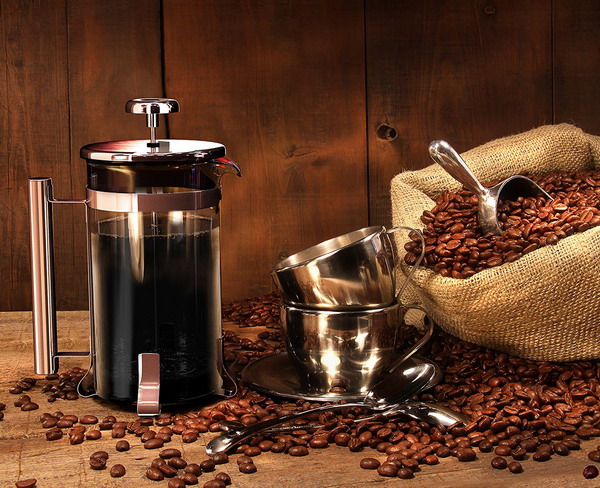Tired of making the same old coffee? In this article, I will be teaching you how to use a French press.
Ever been forced to stay up late at night? If you’re going to stay up all night, why not make your caffeine fancier?
What is a French Press?
A French Press is used for brewing coffee. You’ll know it’s a French Press if it has a metal screen with holes attached to a rod.
The French Press also has various names such as a press pot, coffee press, coffee plunger, cafetiere a piston and cafetiere.
The History Behind
Though many say that it was invented by Attilio Calimani back in 1929, the French Press actually dates back to the 1800’s. It wasn’t as famous as it is now, but it started to pop up in 1852.
A metalsmith and merchant from Paris received a joint patent describing a rod attached to a tin filled with holes and sandwiched between layers of flannel.
This type of coffee maker only became popular in the 1920’s. A Milanese firm perfected the device in the following years. A 1935 version had a spring wrapped around the plunger discs.
Acquiring Great Coffee with the French Press
Before you continue, remember that using a French Press to make your coffee takes time. It’s not something that you can just make immediately then go back to work.
Why do people prefer coffee made using a French press? First of all, it aids in producing fresh coffee. It’s not like the ones you grabbed from the convenience store.
Since it has been around for decades now, the plunger method is also known as a time-tested way to make coffee.
Lastly, the one making the coffee is completely in control of how it will taste. He will have full control on the measurement, as well as the actual grinding process.
A Few Reminders
It may look simple, but to get that best coffee many talk about, it is crucial to exert a little more effort during the preparation.
Remember to grind the beans properly and check if you have a coarse and even ground. This can affect the taste of your coffee.
Weigh the coffee. Different types have different densities. They can also yield different results. Once you get the perfect blend, it will be easier to recreate it. Just make sure to take note of the measurements, so you can use the same next time.
Considering the type of French Press is also a good idea. It would be best to go for one made of stainless steel since it is more durable and can retain heat longer.
Using the French Press
Once you get the perfect texture and measurement of your coffee, you can preheat your French press. Fill it up with hot water and let it sit for a while to let it heat.
Add in the grounds once it’s already heated up. Again, take note of the amount of coffee you’re putting in. Consider both the size of your press and your cup.
With all that aside, it’s now time to add in your water. However, avoid pouring too much water at once. Pour just enough to soak the grounds.
Stir and wait for 30 seconds. Do not forget to cover it during this period. This can help retain the heat.
Afterwards, you can fill up the French press. Stir it gently once again before putting the plunger on and wait for three and a half minutes.
Press the plunger down slowly. Don’t do it all at once as the contents may spill or the glass may break.
Pressing down will also reveal how you ground it. If it presses down easily and without resistance then it may have been too coarse.
If you had a hard time pressing it down then you most probably ended up with a too fine of a ground.
Pour the pressed coffee into another container first. This is to ensure that it won’t extract and make your coffee bitter if you let it sit inside the press.
Conclusion
Now that you know how to use a French press, your coffee doesn’t have to be the same old boring cup. I hope you found this article helpful and please do comment and share this article if it did!

